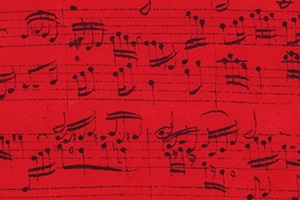Music Theory
The Andalusian cadence: distinct chord progression of flamenco that captivated all pop music genres

Flamenco by 4i @ flickr
Country: Spain
The Andalusian cadence is a musical term denoting a chain of four chords that appear sequentially through each step of major and minor scales in descending order. This chord sequence is used in a broader sense than the title might suggest since, in music theory, cadence means the end of the work or its section while the Andalusian chord progression can be heard anywhere in a piece and often in a repeated manner.
This dramatic progression is significantly used in the Spanish folk music of the flamenco genre which can be traced back to the 18th century. That is why the descending chord chain got its name after the Andalusia region, although similar cadential progression had been widespread in European classical music at least since the Renaissance.
The Andalusian progression is most often applied in the harmonic minor scale when chords move down from the tonic to the major dominant i–VII–VI–V. For guitar-oriented flamenco music, typical keys are A minor and D minor which is the most convenient progression for guitarists. In these keys, the Andalusian chords chain is as follows:
- Am–G–F–E
- Dm–C–B♭–A
One of the first known examples of the Andalusian sequence in vocal music is Lamento de la Ninfa, a madrigal based on Am–G–F–E chain, which was written by Italian composer Claudio Monteverdi in 1638. Since then, the progression is easy to trace in classical music of any period but in the 20th century, it reached an incredible level of citation in pop music of any genre.
Listen to Bob Dylan's One More Cup of Coffee (Valley Below) where the Andalusian progression Am–G–F–E is used for the verses:
Here is just a small list of famous pop songs containing the Andalusian progression:
- Don't Let Me Be Misunderstood (Bm–A–G–F♯) by Bennie Benjamin, Horace Ott, and Sol Marcus
- Sultans of Swing (Dm–C–B♭–A) by Dire Straits
- Ice Cream Man (Cm–B♭–A♭–G) by Tom Waits
- Smooth Criminal (Am–G–F–E), by Michael Jackson
Listen to Ray Charles and Margie Hendrix perform Percy Mayfield's Hit the Road Jack which is entirely based on the Andalusian Am–G–F–E progression that constantly repeats throughout the song:
In the major scale, the Andalusian sequence applies as a stepwise movement down from the sixth to third scale degree vi–V–IV–III. So for С major, the chain contains Am–G–F–E chords, which is absolutely identical to the Andalusian A minor progression, but here these chords represent other scale degrees.
It should be noted that the mediant iii chord of the major scale is a minor one but in the Andalusian sequence, it is replaced with a major III chord which makes its appearance very surprising for a listener.



